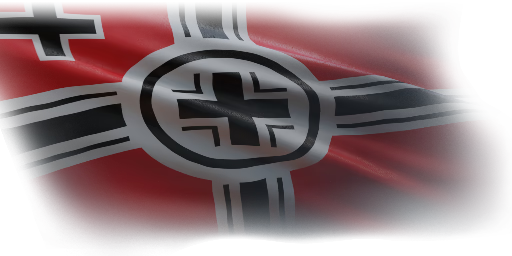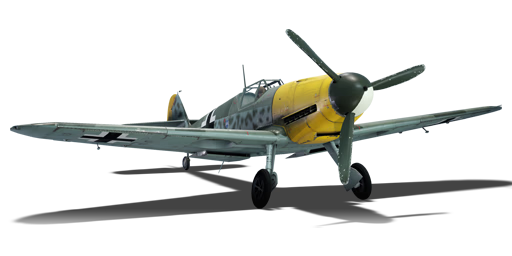



The Bf 109 F-1 is a German fighter. It was introduced in Update 1.37. Setting the basis for the definitive version of the Bf 109, the F-4, the Bf 109 F-1 saw substantial improvement over the earlier Emil.
Having picked up their Bf 109 trade in the earlier Bf 109 B-1 and the Emil series, the player will be presented with the Bf 109 F-1. Even though it's not the definitive version of the Friedrich, the F-1 is still a good starter plane for the series. If the player has done their best to understand how to handle the 109 during their time with the B-1 and Emils, they will rejoice at the performance of the F-1. Likewise, if the player has not gone through the trouble of learning the ins and outs of the Bf 109s with the earlier models, they will slowly realize the error of their ways when flying the Friedrichs.
The F-1 is the perfect starting point for the Friedrich line. The most notable change of the Friedrich over the Emil is its performance. Having a more aerodynamically efficient design, especially in the nose, the plane is propelled forward by a powerful DB 601 N producing up to 1175 hp. Reaching speeds up to 615 km/h at 5.2 km altitude, the Friedrich is testimony to the trademark acceleration and speed found in the Bf 109s. A powerful climber, the F-1 quickly reaches altitude and can easily out climb most of its historic counterparts. As with all Bf 109s, the optimal climbing speed is 270 km/h (IAS). As such, the Bf 109 F-1 should largely be played like the Emils, with the bonus of additional performance making the flying and fighting even easier. As with the Emil, fluid and speedy transitions between altitude and speed, together with well-timed uses of flaps, throttle and manoeuvres, enable the Friedrich to quickly change an engagement to its favour.
That said, the player should keep in mind that the Bf 109 F-1 has less of a punch than the preceding E-3. While mounting a 20 mm MG FF/M cannon in the nose make the aiming somewhat easier, it does lose out on the two MG FFs that had previously been mounted in the wings. This downgrade is somewhat offset by the fact that the Friedrich's MG FF/M can shoot deadly Mineshells, but careful aiming and trigger discipline is required to make the most out of the 60 available shots. Attempting shots at range is a significant waste of ammo. Luckily, the F-1 holds a respectable amount of 7.92 mm MG 17 rounds (500 per gun, 1,000 total), allowing you to spray when needed. Using the "Stealth" ammunition belt for the machine guns may help aim, due to less visual interference from the machine-gun tracers, but this is personal preference.
flaps
flaps
flaps
brake
| Belt | Belt filling | Armor penetration (mm) at a distance: | |||||
|---|---|---|---|---|---|---|---|
| 10 m | 100 m | 500 m | 1000 m | 1500 m | 2000 m | ||
| IT/HEI/APHE | 19 | 18 | 15 | 10 | 4 | 4 | |
| IT/HEI/HEI/APHE | 19 | 18 | 15 | 10 | 4 | 4 | |
| FI-T/HEI/HEI/FI-T/HEI/HEI/APHE | 19 | 18 | 15 | 10 | 4 | 4 | |
| IT | 10 | 10 | 5 | 2 | 1 | 1 | |
| APHE/HEI/HEI/HEI/AP-I | 20 | 17 | 10 | 5 | 3 | 2 | |
| Belt | Belt filling | Armor penetration (mm) at a distance: | |||||
|---|---|---|---|---|---|---|---|
| 10 m | 100 m | 500 m | 1000 m | 1500 m | 2000 m | ||
| AP-T/AP-I/AI | 9 | 8 | 6 | 3 | 0 | 0 | |
| AP-T/AP/AI/AP-I | 13 | 12 | 7 | 3 | 2 | 0 | |
| AP-T | 9 | 8 | 6 | 3 | 0 | 0 | |
| AI/AP/AP/AP/AI | 13 | 12 | 7 | 3 | 2 | 0 | |












Flight performance | |
|---|---|
Survivability |
|---|
Weaponry | ||
|---|---|---|